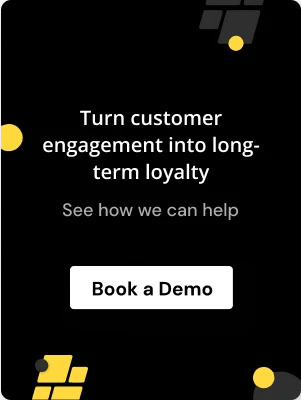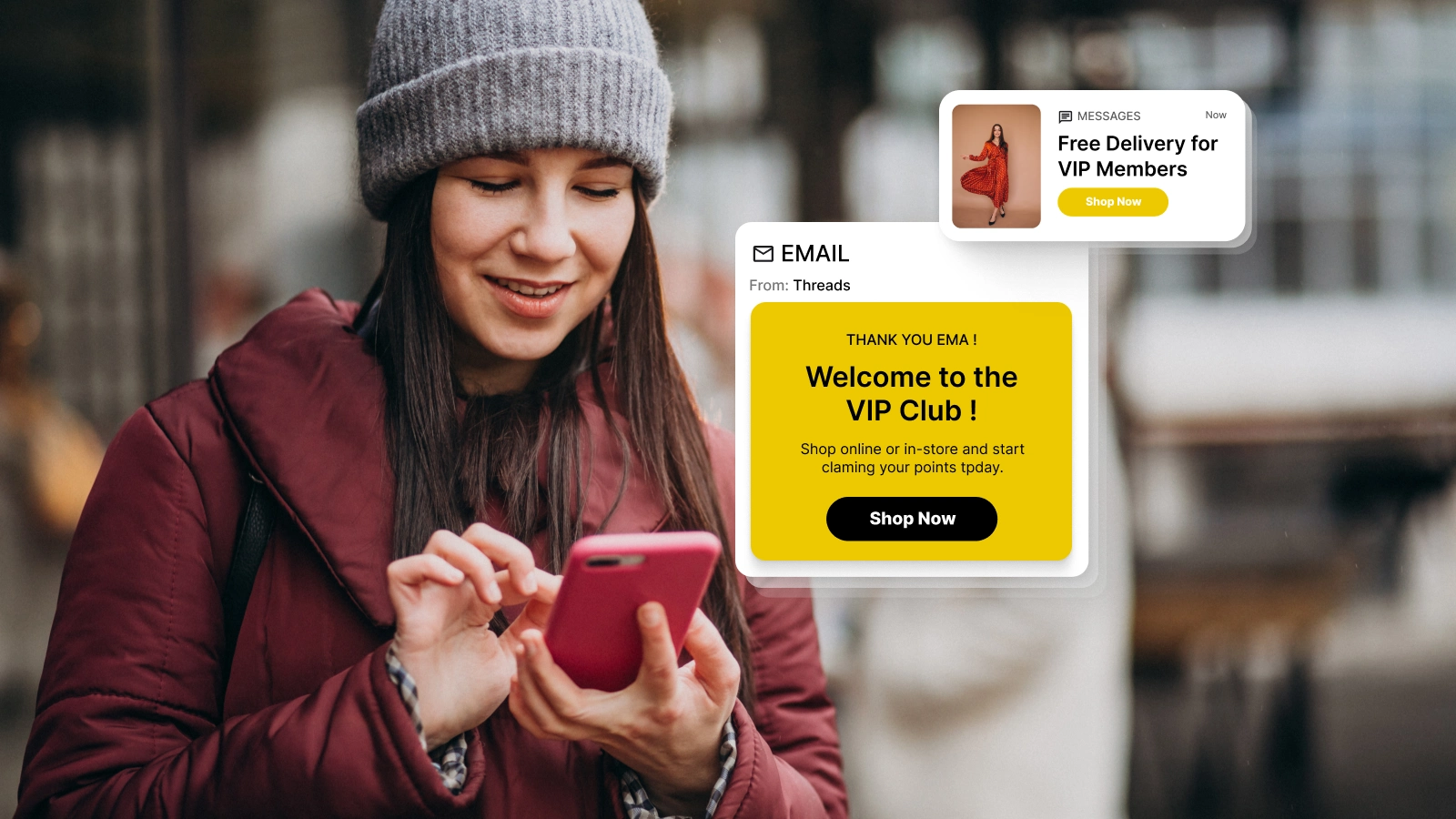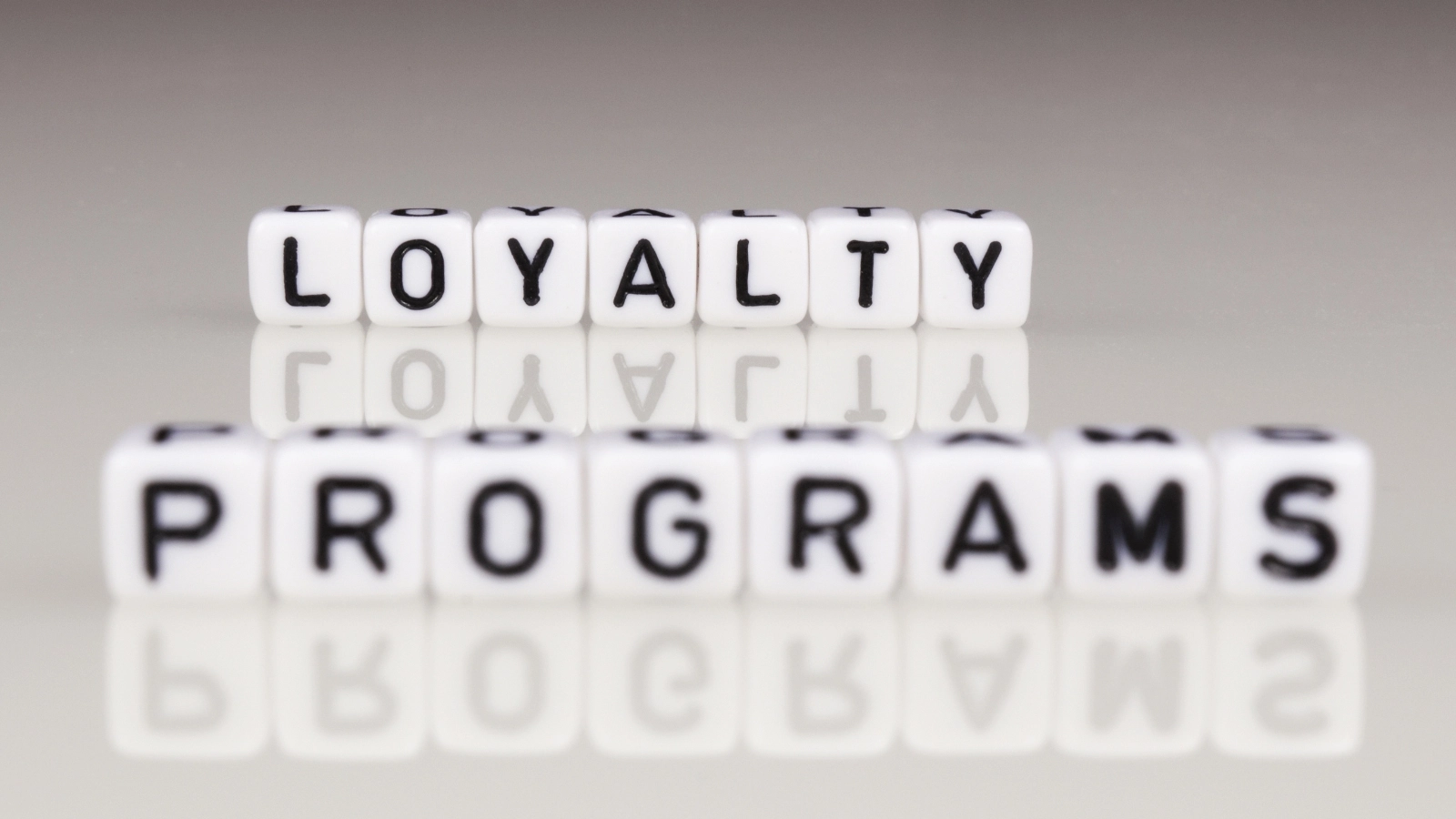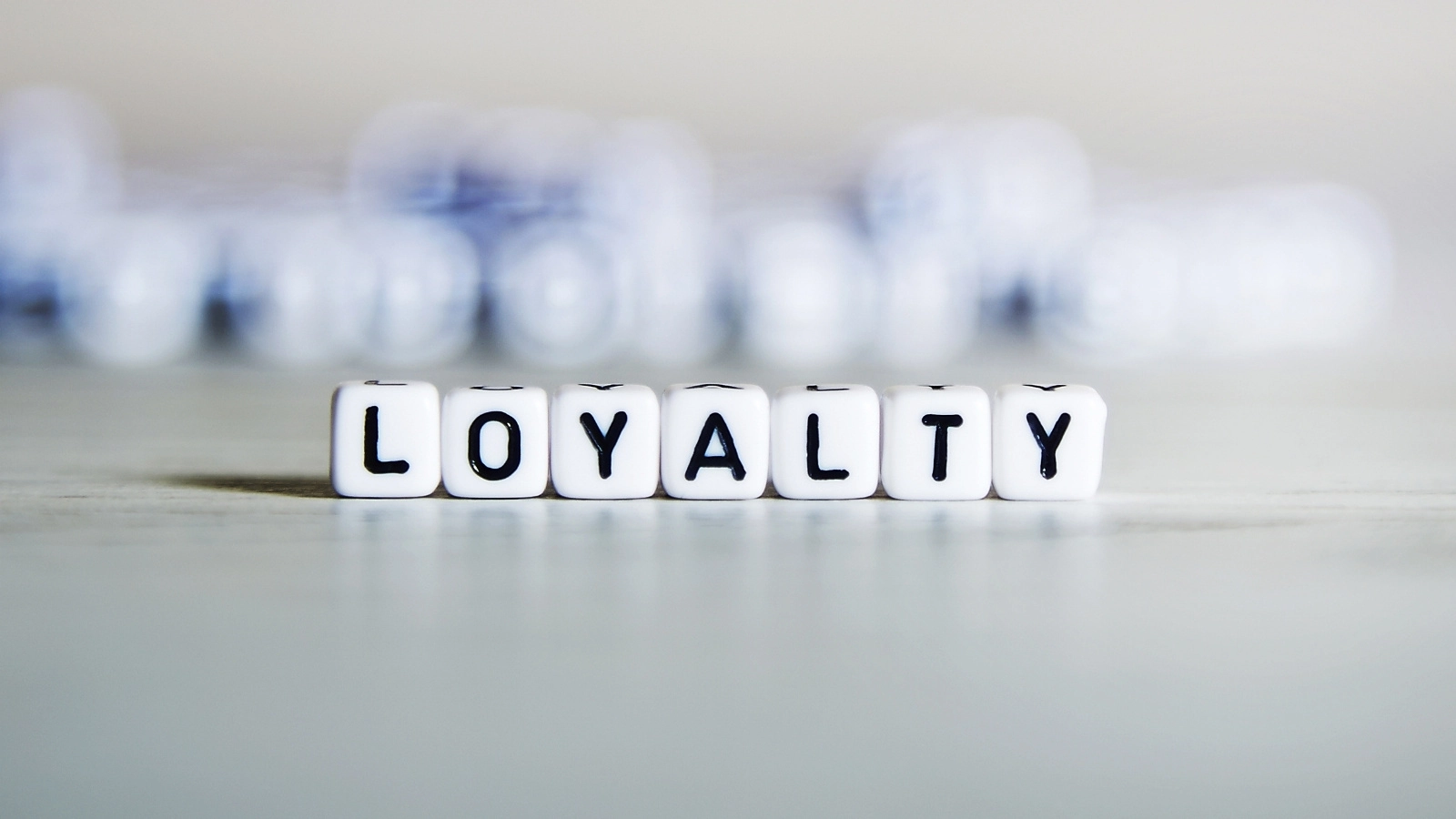.avif)
.avif)
What if every purchase a customer made brought them one step closer to making another?
Loyalty isn’t just about satisfaction; it’s about creating incentivized habits. A well-structured loyalty points program turns casual buyers into committed customers by rewarding consistent engagement.
These programs don’t just drive repeat purchases—they’ve become strategic priorities. In fact, over 60% of executives increased their loyalty budgets in their most recent planning cycle, recognizing loyalty as a key lever for sustainable growth. And the numbers back it: 85% of consumers say loyalty programs make them more likely to stick with a brand, and 73% adjust their spending to maximize rewards.
In this guide, you’ll learn how loyalty points programs work, explore different models, and get practical steps to build one that aligns with your brand goals. Whether you're looking to reduce churn, increase revenue per customer, or deepen engagement, this playbook will help you do it with precision.
What Is a Loyalty Points Program?
A loyalty points program is a structured system that rewards customers for completing specific, value-driving actions, such as making purchases, referring others, writing reviews, or engaging with branded content. Each activity earns points, which customers can redeem for tangible benefits like discounts, free products, or early access to launches.
The purpose is to create a repeatable engagement loop: customers feel rewarded for actions they already take, and brands benefit from increased retention, higher order frequency, and deeper user data. These programs convert transactional relationships into long-term brand loyalty.
Common Program Structures
- Fixed Rate: Simple and predictable, customers earn points at a consistent ratio
- Tiered: Customers unlock accelerated earning rates or premium rewards as they move up loyalty tiers, based on spend, frequency, or engagement.
- Gamified: Programs include missions, milestones, or challenges (e.g., "Complete 3 orders this month and earn 500 bonus points"). This adds a layer of fun and encourages sustained participation.
Loyalty points systems also feed back into your CRM and analytics stack, offering insights into customer behavior, preferences, and lifetime value. With Nector, you can automate this flow, capturing granular data, segmenting users based on earning patterns, and aligning reward triggers with real-time customer actions. When done right, loyalty programs deliver increased brand equity and measurable ROI without adding operational complexity.
How Loyalty Points Programs Work
A loyalty points program only delivers impact when it functions seamlessly across earning, redemption, and tracking. For brands aiming to drive retention and repeat transactions, each component must be aligned with the user journey and behavioral triggers.
1. Earning Points: Incentivize the Right Behaviors
Loyalty programs are most effective when they reward actions that contribute to growth. Core activities include:
- Purchases: Award points based on order value, category, or frequency.
- Engagement Touchpoints: Reward reviews, newsletter signups, app installs, or social follows.
- Referrals: Encourage virality by awarding points for successful invitations.
- Bonus Campaigns: Offer multipliers (e.g., double points) during product launches or peak seasons to spike activity.
Use behavioral data to segment individuals by their earnings and when they occur. This creates personalization without overcomplicating the experience.
2. Redeeming Points: Create Real, Flexible Value
Redemption should feel frictionless and rewarding. Effective programs offer:
- Instant Discounts: Apply points directly at checkout.
- Exclusive Access: Unlock member-only products, early sales, or priority support.
- Tiered Rewards: Introduce multi-level benefits based on point thresholds.
- Clear Conversion Logic: Maintain a transparent and intuitive point-to-currency ratio (e.g., 500 points = $5).
Flexible redemption options increase satisfaction and reduce unused point liabilities.
3. Points Expiry and Visibility: Drive Urgency and Transparency
To keep the program active and engaging:
- Set Expiry Timelines (e.g., 6–12 months) to encourage ongoing purchases.
- Trigger Automated Reminders via email, push, or in-app alerts before expiration.
- Offer Real-Time Dashboards where users can track balances, milestones, and reward eligibility.
Platforms like Nector make it easy to configure all three layers, from earning logic to expiry automation, within a single dashboard.
Now that we’ve covered how loyalty programs function, it’s time to explore the different structural models that power them. These models define how points are earned, what behaviors are rewarded, and how engagement scales over time.
Also Read: Top Personalization Tech Stack for eCommerce (2025).
Loyalty Point Program Models
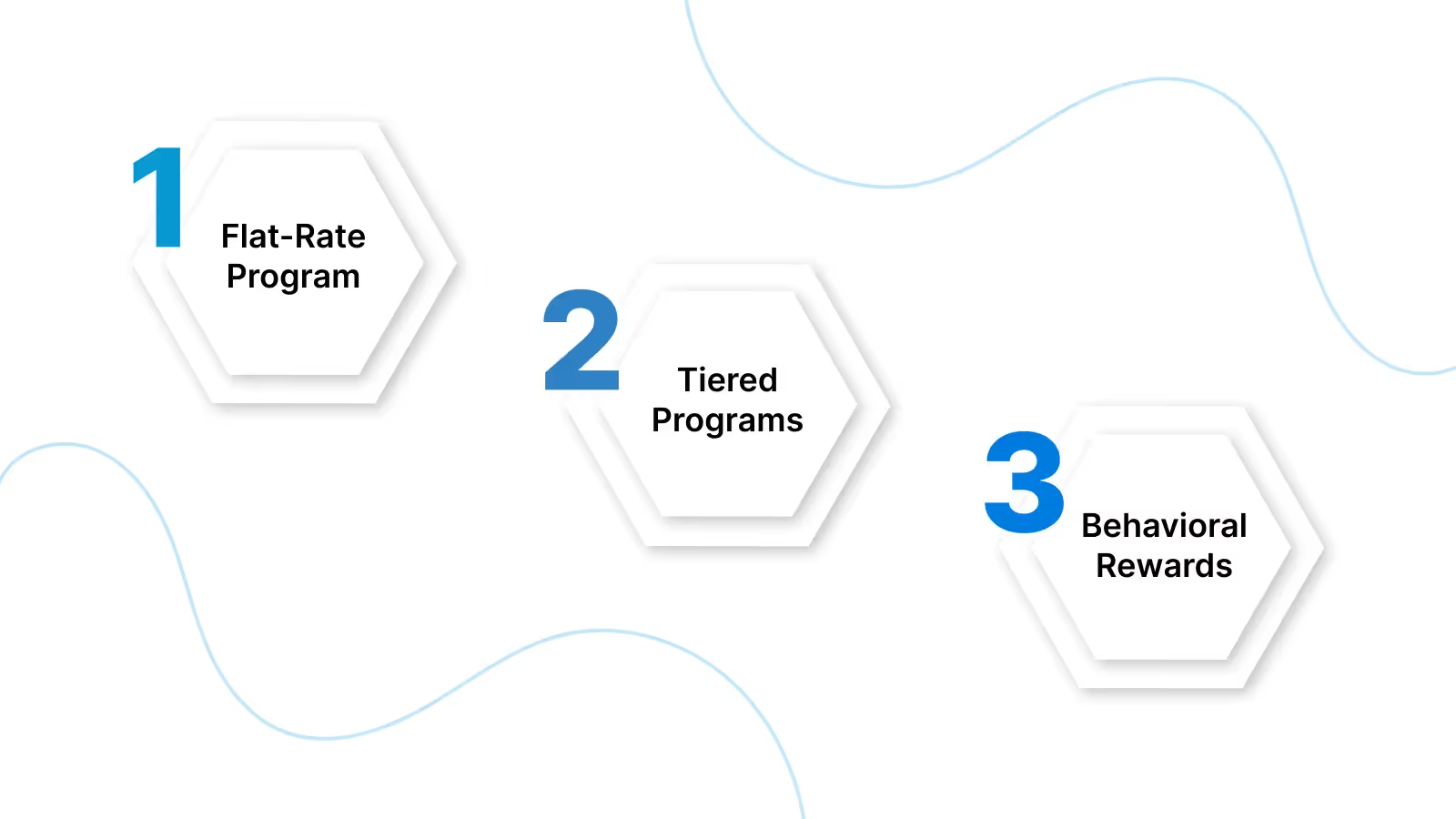
Loyalty programs must adapt to how your customers interact with your brand. The right points structure helps align business goals with real user behavior, ensuring that every incentive drives meaningful engagement and long-term value.
1. Flat-Rate Program
Customers earn a consistent number of points per transaction or action (e.g., "Earn 10 points per $1 spent").
- Best for: Brands with clear pricing and uniform margins who want simplicity and predictability.
- Why it matters: Reduces complexity during onboarding and makes value accumulation immediately clear, important for first-time buyers or high-volume stores.
2. Tiered Loyalty Programs
Customers move through progressive levels (e.g., Bronze → Silver → Gold) based on cumulative spend, frequency, or engagement.
- Best for: Brands focused on repeat purchases and increasing average order value.
- Why it matters: Higher tiers unlock accelerated rewards (e.g., 2x points, early access to collections), creating psychological commitment and long-term loyalty. Tier visibility also builds aspiration among mid-level customers.
3. Behavior-Triggered Rewards
Points are awarded for actions beyond purchases, like writing a product review, referring a friend, or engaging with your brand’s content.
- Best for: Brands looking to boost interactions between purchases and build a community around the product experience.
- Why it matters: These actions signal advocacy and intent. Rewarding them strengthens brand recall and broadens participation across your customer base, even among lower-frequency buyers.
Nector allows you to deploy all three structures in parallel, configuring custom rules, segment-based logic, and dynamic rewards from a single dashboard.
Now that we've covered the different point structures, it's time to examine something every program owner must define clearly: how to assign a monetary value to those points.
Also Read: The Emotional Side of Brand Loyalty: What Customer Reviews Reveal.
Calculating Point Value
Defining the monetary value of each point is a foundational step in building a sustainable loyalty program. It determines how your customers perceive value and has a direct impact on profitability, retention, and redemption behavior.
Steps to Determine Point Value
- Define Clear Redemption Logic
Establish a consistent conversion rate, for example:
- 100 points = $1 off on your next purchase.
- 1,000 points = free shipping or exclusive early access.
This clarity reduces confusion and enhances user satisfaction.
- Align Point Value With Profit Margins
Avoid blanket discounts that eat into margins. Instead:
- Offer high-margin in-house products or services as redemption options.
- Create bundles that increase average order value while allowing redemptions.
- Reserve premium rewards for higher-tier users to protect unit economics.
- Measure Point Impact With ROI Metrics
Track whether redemptions lead to:
- Higher purchase frequency.
- Increased average order value.
- Lower churn over a 3–6 month window.
Use these metrics to adjust your point value over time without reducing perceived customer benefit.
Balancing Perception and Economics
It’s not just what a point is worth; it’s what it feels like it’s worth. Loyalty members spend 67% more than new or non-program customers, reinforcing the psychological benefit of point-based rewards. For example:
- A customer earns 1,000 points and sees a $6 reward, signaling a clear benefit.
- Display potential rewards at each customer touchpoint (cart, dashboard, email) to reinforce value.
Platforms like Nector allow brands to:
- Dynamically assign point values based on customer segments or product categories.
- Control reward margins in real time without manual recalibration.
- Run structured experiments to test and optimize reward structures.
All of this is managed within a centralized loyalty engine designed for performance and scale.
Now that the value structure is in place, it’s time to explore what makes loyalty programs a long-term driver of customer engagement and brand growth.
Benefits of Loyalty Points for D2C Brands
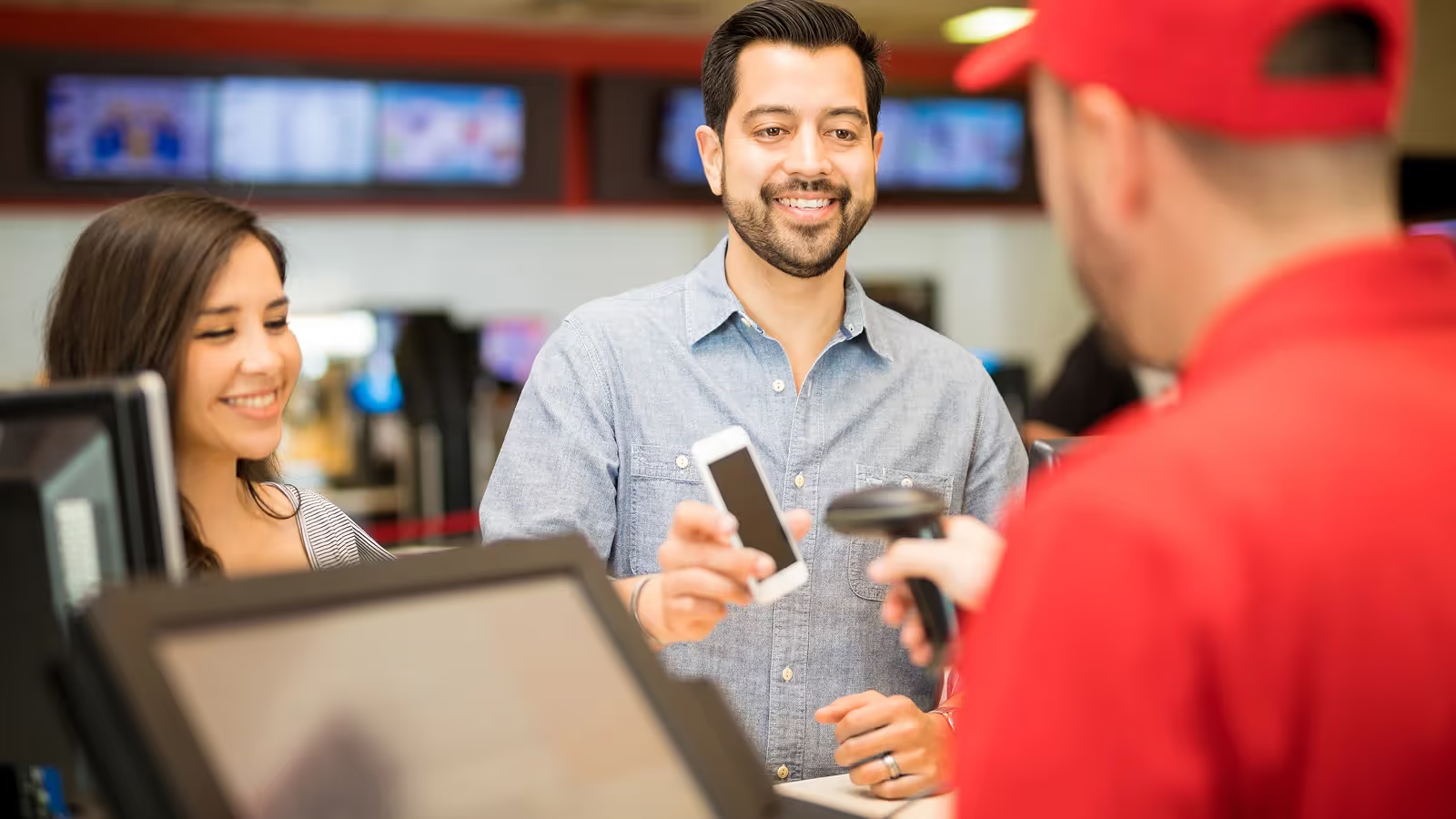
A well-structured loyalty points program delivers measurable business outcomes when aligned with the customer journey and data systems. Here’s how it creates value across key growth metrics:
1. Strengthens Customer Retention
Customer retention is more cost-effective than acquiring new customers, and loyalty programs are a proven way to drive it. Loyalty points create consistent incentives for repeat purchases, encouraging customers to return frequently and form deeper brand relationships. Loyalty program members also generate 12–18% more revenue annually compared to non-members.
Insight: Members who redeem rewards spend 3.1x more annually than those who don’t, proving the tangible ROI of redemption-based engagement.
2. Lower Acquisition Costs Through Referrals
Referral programs can be paired with loyalty systems to reduce CAC by activating your best customers as advocates. When paired with a referral engine, reward-based sharing becomes a low-cost acquisition strategy with high conversion potential.
3. Increases Lifetime Value Through Intent-Based Spending
Points systems nudge customers toward higher-value behaviors:
- Increasing average order value to hit redemption thresholds.
- Purchasing during multiplier events (e.g., double points weekends).
- Engaging more frequently with new product drops.
These behaviors extend customer lifespan and increase overall spend.
4. Boosts Omnichannel Engagement
When integrated across email, app, web, and in-store channels, loyalty programs offer consistent reinforcement. Personalized reminders, expiring point nudges, and tier upgrades build anticipation and drive interaction at key stages. Nector enables brands to deploy this cross-channel logic while capturing performance metrics in real time.
Now that the business case is clear, let’s examine how to develop a loyalty program that yields consistent and scalable impact.
Steps to Set Up a Loyalty Points Program
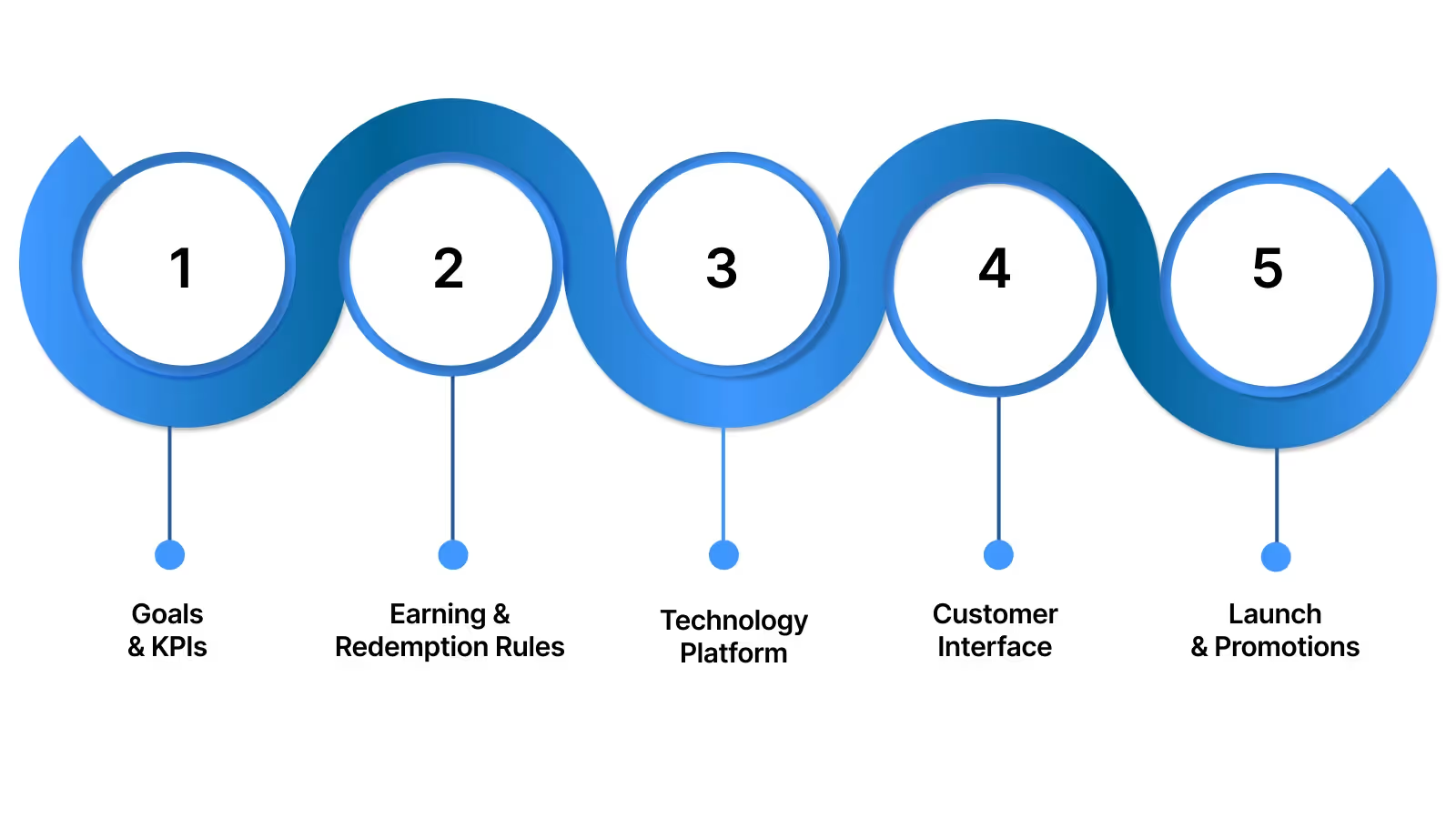
A successful loyalty program is more than a backend system. It’s a strategic layer integrated with your business model, customer data, and long-term growth goals.
1. Define Goals and KPIs That Align With Customer Behavior
Start by identifying measurable objectives, such as increasing purchase frequency, extending customer lifetime value, or boosting retention in specific segments. Use baseline metrics like average order value (AOV), repeat purchase rate, and customer churn to define your KPIs. Given that 80% of future profits typically come from just 20% of customers, loyalty programs targeting this base offer significant ROI.
2. Structure Earning and Redemption Rules With Intent
Design earning mechanisms that nudge profitable behaviors:
- Points per currency spent.
- Bonus points on high-margin SKUs.
- Event-based triggers (e.g., reviews, referrals, first purchase).
Ensure redemption is intuitive. Offer clear conversion ratios and multiple reward types to enhance perceived value.
3. Select a Scalable Technology Platform
Choose a platform that integrates with your eCommerce stack, CRM, and marketing automation tools. It should offer:
- Real-time tracking and reporting.
- Automated point updates and expiry alerts.
- Custom reward configurations by customer tier or segment.
Nector makes loyalty management effortless by seamlessly integrating with your existing tools, from Shopify and Klaviyo to GoKwik and WhatsApp platforms. Build smarter, automated campaigns and reward experiences without adding complexity.
4. Design an Engaging Customer Interface
User experience drives participation. Build:
- Dashboards showing earned and available points.
- Mobile-friendly interfaces synced across channels.
- Reminder workflows via email or SMS to reduce point expiry.
5. Plan a High-Impact Launch and Ongoing Promotions
Drive initial adoption through:
- Early access for top customers.
- Double-point periods during product launches.
- Influencer campaigns or referral-based unlocks.
Sustain interest with periodic events, milestone bonuses, and re-engagement triggers.
Once your program is live, continuous monitoring and strategic iteration will determine its long-term impact. Track what’s working, recalibrate what’s not, and build loyalty into the core of your growth engine.
Also Read: Loyalty Program ROI: Are They Worth the Investment for Your Business?
Best Practices to Maximize Success

A loyalty program that fails to engage typically suffers from complexity, misaligned incentives, or a lack of visibility. To ensure long-term performance, apply these data-driven practices:
- Prioritize Simplicity and Clarity: Ensure customers can easily understand how to earn, track, and redeem points. Visual cues, tooltips, and in-cart messaging can improve comprehension.
- Automate Proactive Communication: Utilize behavior-based triggers to send timely reminders via SMS, push notifications, or email. Remind users about unused points, upcoming expiry, or new ways to redeem rewards.
- Design for Tier Mobility: Highlight how customers can level up and what each tier unlocks. Promote progression through milestones and real-time tracking to encourage sustained activity.
The strongest programs evolve. These practices serve as a baseline to help you stay agile and relevant as you scale retention efforts.
With Nector, you can implement these best practices at scale, automating point logic, syncing loyalty data across CRM platforms, and optimizing user engagement with built-in analytics. Its intuitive dashboard supports agile iteration, so your program grows with your customers. Considering these strategies, it’s equally important to address common mistakes brands unknowingly make.
Common Mistakes to Avoid
Even well-intentioned programs fall short due to common loyalty program mistakes like unclear rules or poor incentives. Below are critical pitfalls that brands must proactively address:
- Overcomplicated Rules and Eligibility Criteria
When earning or redeeming points feels like solving a puzzle, customers disengage. Avoid requiring multiple steps, exclusions, or ambiguous terms. Clear, transparent rules make your program accessible and trustworthy.
- Uncompetitive or Low-Value Rewards
If the perceived value of a reward is too low, customers will not feel motivated to participate. Ensure that rewards feel worthwhile relative to effort. Consider offering tiered rewards, exclusive perks, or early access privileges to enhance perceived benefit.
- Limited Channel Visibility
A common mistake is treating loyalty as a siloed function. Customers should be able to view, earn, and redeem rewards seamlessly across all channels—mobile, desktop, in-store, or via support. Consistent visibility builds trust and increases program usage.
Pro Tip: Syncing real-time loyalty data across systems is critical for operational integrity. Platforms like Nector ensure that reward balances, expiry alerts, and user engagement metrics are updated instantly across all customer touchpoints.
Beyond avoiding errors, implementing advanced strategies can further elevate your program.
Also Read: 9 Successful Loyalty Program Examples of 2025 | Best Customer Rewards Programs
Advanced Loyalty Strategies
Elevating your loyalty program requires more than just execution—it demands innovation tailored to customer expectations and behavioral patterns. Below are high-impact strategies that add long-term value:
- Personalized Rewards:
Use transaction data, browsing behavior, and customer segmentation to offer rewards that feel uniquely relevant. For example, frequent buyers might unlock early access, while occasional buyers receive tailored win-back offers. This approach boosts perceived value and increases engagement per user. - A/B Testing for Optimization:
Use controlled experiments to compare different point earning rates, redemption thresholds, or reward types. A/B testing helps you identify which combinations yield the highest repeat purchases, lowest churn, and greatest ROI. Continual iteration sharpens program effectiveness without assuming what works best. - Cause-Driven Redemption Options:
Allow customers to donate their points to vetted charities or social causes. This not only strengthens emotional affinity with your brand but also encourages participation among values-driven consumers. Transparency about impact can amplify brand trust and advocacy.
To translate strategy into execution, it's time to explore a clear roadmap for launching and scaling a loyalty program that delivers measurable outcomes.

Driving Long-Term Growth Through Loyalty Points Programs
A well-implemented loyalty points program can significantly improve retention, increase customer lifetime value, and reinforce brand loyalty. It starts with setting clear business goals, crafting a user-friendly structure, and offering high-impact rewards your audience genuinely values. The most successful programs evolve, measuring performance, responding to customer behavior, and refining engagement strategies over time.
If you're ready to scale loyalty with precision and insight, Nector offers the infrastructure you need. From seamless integration to real-time analytics and personalized reward logic, our platform is built to help you build customer loyalty that lasts. Book a free demo today and see how Nector.io can power your growth.
FAQs
Start Building Customer Retention That Lasts


.avif)

